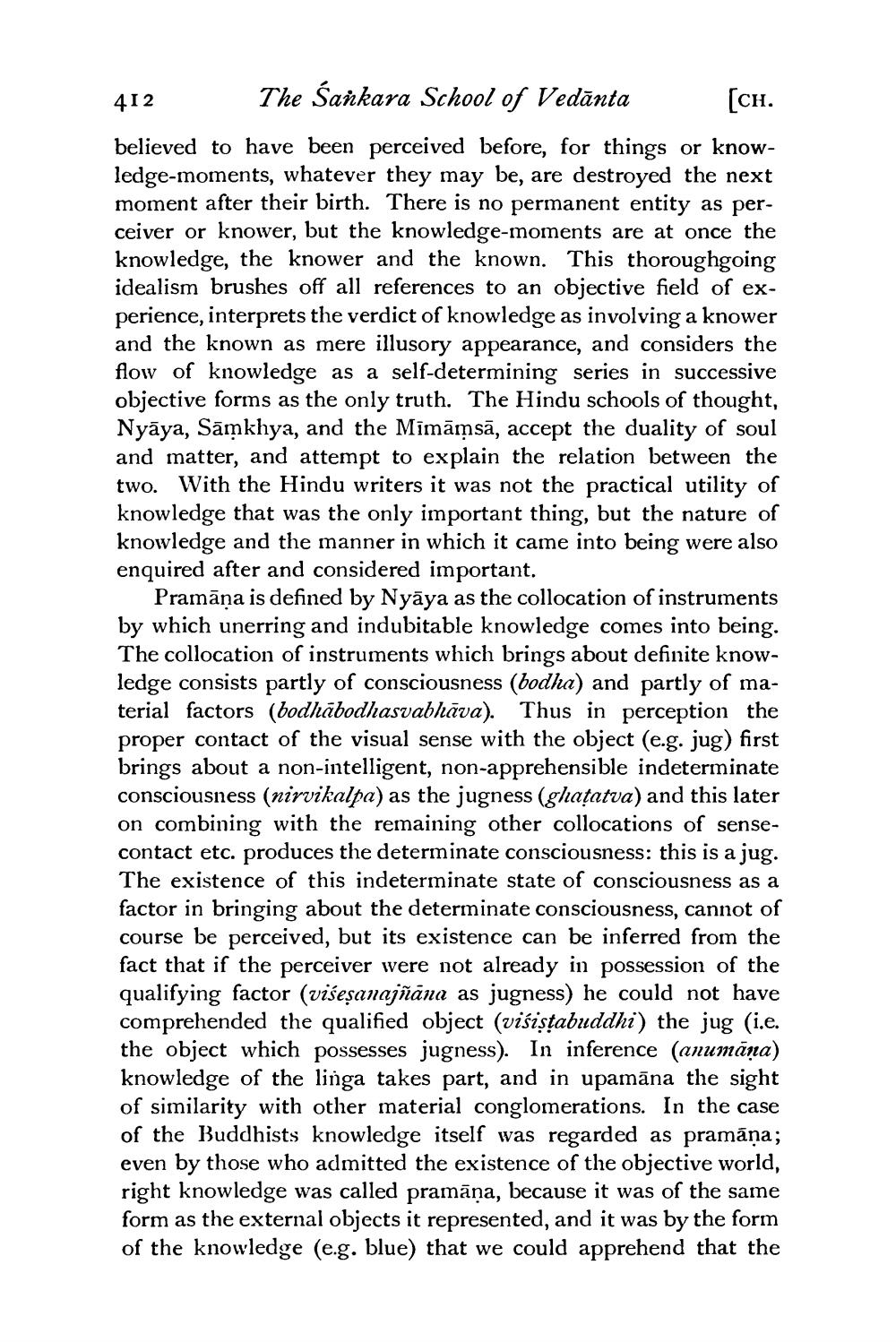________________
412
The Sankara School of Vedānta
(CH.
believed to have been perceived before, for things or knowledge-moments, whatever they may be, are destroyed the next moment after their birth. There is no permanent entity as perceiver or knower, but the knowledge-moments are at once the knowledge, the knower and the known. This thoroughgoing idealism brushes off all references to an objective field of experience, interprets the verdict of knowledge as involving a knower and the known as mere illusory appearance, and considers the flow of knowledge as a self-determining series in successive objective forms as the only truth. The Hindu schools of thought, Nyāya, Sāmkhya, and the Mimāmsā, accept the duality of soul and matter, and attempt to explain the relation between the two. With the Hindu writers it was not the practical utility of knowledge that was the only important thing, but the nature of knowledge and the manner in which it came into being were also enquired after and considered important.
Pramāṇa is defined by Nyāya as the collocation of instruments by which unerring and indubitable knowledge comes into being. The collocation of instruments which brings about definite knowledge consists partly of consciousness (bodha) and partly of material factors (bodhābodhasvabhāva). Thus in perception the proper contact of the visual sense with the object (e.g. jug) first brings about a non-intelligent, non-apprehensible indeterminate consciousness (nirvikalpa) as the jugness (ghatatva) and this later on combining with the remaining other collocations of sensecontact etc. produces the determinate consciousness: this is a jug. The existence of this indeterminate state of consciousness as a factor in bringing about the determinate consciousness, cannot of course be perceived, but its existence can be inferred from the fact that if the perceiver were not already in possession of the qualifying factor (viseșanajñāna as jugness) he could not have comprehended the qualified object (višistabuddhi) the jug (i.e. the object which possesses jugness). In inference (anumāna) knowledge of the linga takes part, and in upamāna the sight of similarity with other material conglomerations. In the case of the Buddhists knowledge itself was regarded as pramāna; even by those who admitted the existence of the objective world, right knowledge was called pramāņa, because it was of the same form as the external objects it represented, and it was by the form of the knowledge (e.g. blue) that we could apprehend that the




